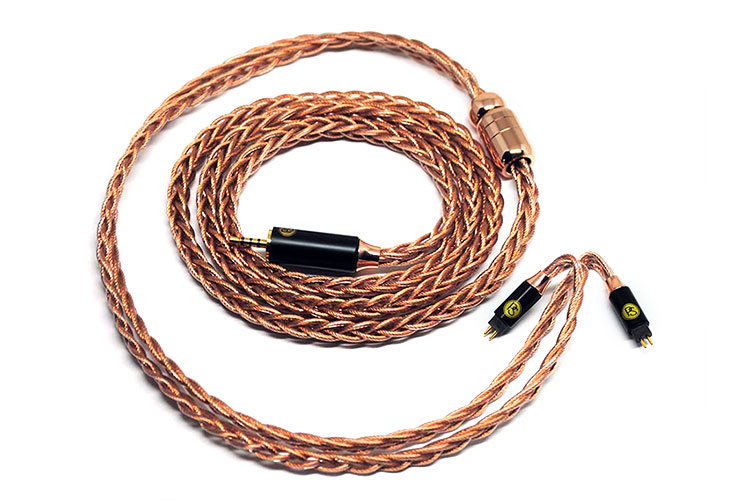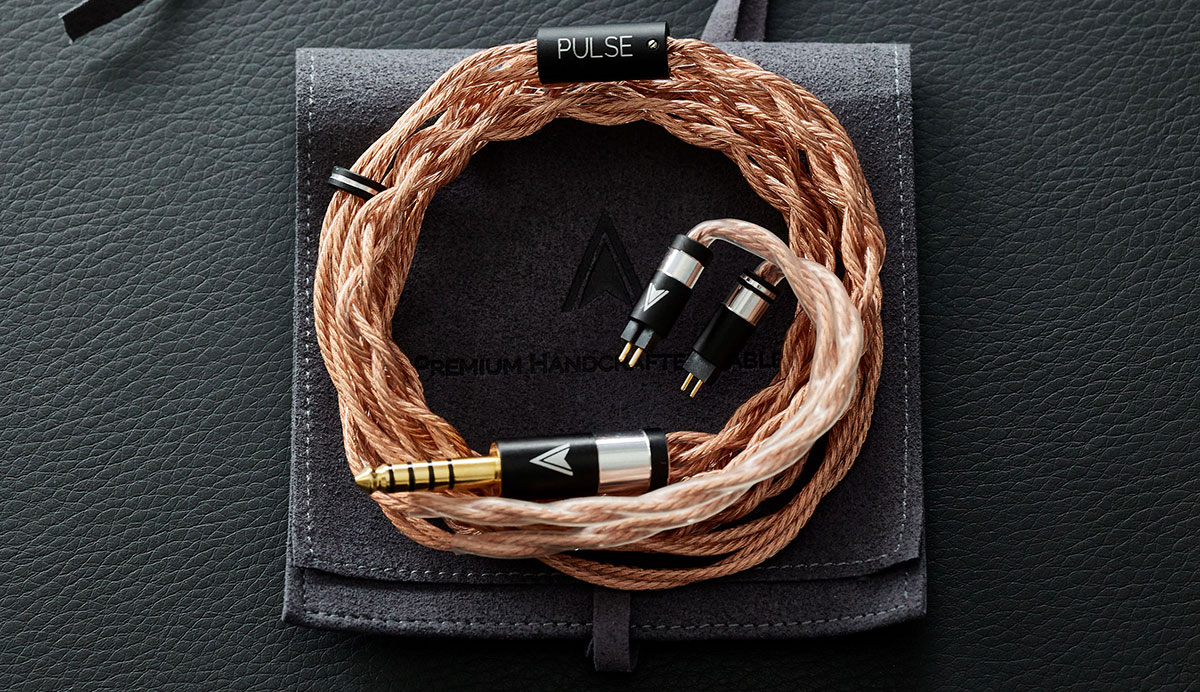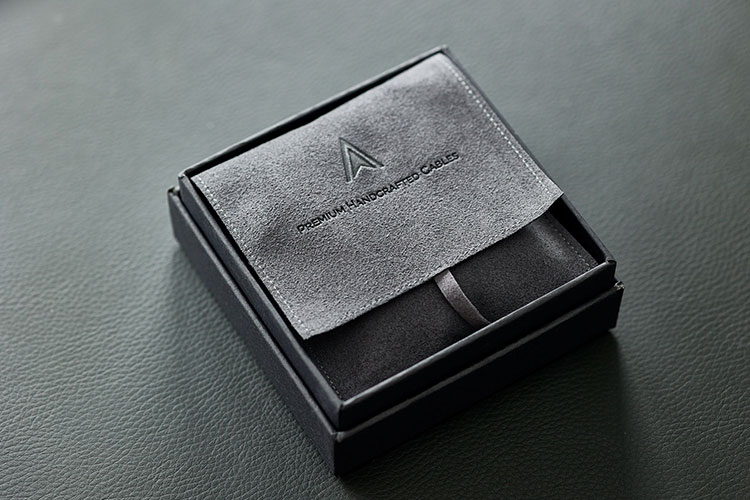Synergy
This is a cable that pairs best with IEMs which already have a bass emphasis and forward midrange as it enhances what is already there and increases the overall quantity and quality.
Alternatively, if one of your existing IEMs could do with a bump in bass quantity or a bit lacking in midrange presence then this pairing might work also.
Empire Ears Legend EVO
The Empire Ears Legend EVO is a bass monster. Equipped with a Weapon X and two W9+ subwoofer dynamic drivers, it is one of the best bass-focussed IEMs currently available.
The Pulse brings the bass to the forefront of the sound signature and provides more impact on Legend EVO. The sub-bass on the Legend EVO still digs deep however the focus now is more on the mid-bass frequency.
As a result, the bass can come off as slow to decay with less control, moving away from its slightly punchier stock setting. There is also slightly more body and smoothness to midrange instruments and vocals with a hint of warmth timbre.
The Pulse does not alter the neutral treble nature of the Legend EVO and keeps it at its default position with no obvious sibilance or harshness.
However, the enhancement and forwardness of the bass and midrange are at the expense of some treble attenuation. This may suit some listeners as it makes the Legend EVO more vocal and instrumental focussed or shy those away who still want to improve the treble presence.
The staging is wide however I did notice that it was narrower compared to the Legend EVO’s stock cable performance. You get a more intimate quality with this pairing which is quite the opposite of the Xenns Mangird Tea2 which sounded a lot more open compared to its stock cable.
Xenns Mangird Tea2
The overall synergy the Pulse has with the Xenns Mangird Tea2 is excellent. The depth and extension it is very deep with plenty of power throughout. The Pulse does an excellent job in teasing out the low-end, enhancing the texture and well as quantity.
The improvements to the bass frequencies do not result in any unwanted bleeding into the midrange or muddiness in the overall sound.
The Pulse increases the overall resolution and brings the mids further forward. You are now able to pick out the details and textures from instruments, as well as male and female vocals regardless of the enhanced bass presence.
There is a slight hint of warm timbre within the midrange. For example, in Illenium’s “Good Things Fall Apart” the Pulse manages to add more texture and reverberations from the guitar plucks during the introduction.
Male vocals also have a lusher and smooth tone. The bass drop at the beginning of the first chorus allows you to appreciate the improved bass slam and texture. The treble region comes off as neutral so there is no further emphasis or change to the current IEM setup in this area.
The staging is wide and tall and there is clearly some enhancement in the IEMs dynamic range compared to the stock cable. Imaging capabilities are improved with improved instrumental separation and placement.

Select Comparisons
All comparisons made were completed using the Empire Ears EVO and the Xenns Mangird Tea2 paired with the Cayin N8ii DAP as the main source.
Satin Audio Perseus
$699
Technical
The Satin Audio Perseus is a dual 23 AWG / 26 AWG high audio grade premium pure copper cable. If that was not enough to keep your mouth full, the Perseus also features a special structure where it is made up of 2 core layers of dual signal transmission. The special structure assists in enhancing the overall signal and sound quality.
Design
Like the Pulse, the Perseus aesthetics is decidedly coppery with both cables using a translucent PVC coating. There are some differences though in both the handling and the finishing.
Due to its 2 core layer design, the Perseus is a stiffer cable and not as flexible. The splitter on the Perseus differs a bit also being shinier and finished with a rose gold color finishing surrounded by a gunmetal finish.
Performance
Overall, both cables tread along the same lines by shaping both the bass and midrange frequencies. The main differences relate to the presentation of the sub-bass, bass, and midrange and the staging dimensions with our paired IEMs.
On the Legend EVO, the Perseus allows for deeper sub-bass extension and less forward midrange presentation. The mid-bass performance between the two cables on the Legend EVO was the same.
The midrange was presented with similar quality however it was more recessed and not as far forward using the Perseus. Both cables had a similar neutral treble presentation.
The most notable difference was in relation to the soundstage where the Perseus soundstage was much wider and taller. This allowed for a more immersive imaging experience from both instruments and vocals.
For the Xenns Mangird Tea2, there was more sub-bass emphasis from the Perseus compared to the Pulse which focussed more on the mid-bass frequency.
The midrange on Xenns Mangird Tea2 was presented in a similar forward fashion with a high level of detail. Treble performance was similar and presented as neutral. Like the EVO, the Perseus/Tea2 combo offered a wider and taller staging quality with better imaging capabilities.

Plussound X8 Copper
$425
Technical
The Plussound X8 Copper cable is built with an 8-wire, ultra-pure OCC copper Type 6 Litz geometry. The wire count is double that of the Pulse which comes in at 4 wires.
However, the wire gauge on the X8 Copper is a smaller gauge at 26AWG compared to the Pulse’s 23AWG so there is some counter to any concern that dynamic range will be lacking in a 4-wire.
Design
The X8 Copper has a similar copper color appearance to the Pulse and both are coated with a clear PVC jacket. The team at Plussound offers a vast array of design options including custom colors and materials for the connectors, splitter, cable ring, and the termination or plug.
This includes the option to use rhodium as the termination material as opposed to the standard gold plated finish. All parts which go into the cable such as the splitter, connectors, and termination have a rose gold color as the default option with a very premium and shiny appearance.
The Pulse splitter, connectors, and termination have a premium finish, however, it comes in matte black and is not as customizable to the same extent as the X8 Copper.
The X8 Copper is heavier and not as flexible as the Pulse given its higher wire count. However, X8 Copper has a very tight and well-finished braiding technique similar to that of the Pulse.
Performance
Both cables are capable of producing large quantities of sub-bass, especially with the EVO. However, the Pulse’s sub-bass extends deeper and produces more rumble compared to the X8 Copper. The bass region on the Pulse has more quantity and better texturing also.
The Pulse presents the midrange in a more forward fashion with better clarity and resolution. Instrumentals and vocals also have more weight and volume compared to the X8 Copper.
The treble on both cables comes off as neutral for both the EVO and the Tea2 and does not color or alter the underlying treble of the IEM in use.
However, the Pulse treble has slightly the better extension and texture of the two cables. Soundstage height is similar however the soundstage width on the X8 Copper is narrower. Imaging and layering are similar with no significant or noticeable difference from the tested IEMs.
Our Verdict
The Astral Acoustics Pulse cable is a competitive performer in today’s aftermarket. It showcases a strong bass and high clarity midrange performance ideal for any listener who prefers their music to have a bit of bounce in it. However, the Pulse may not suit those who are seeking to enhance the treble of their existing IEMs.
Nevertheless, Astral Acoustics has produced a flexible and attractively-designed cable capable of grabbing the attention of most copper cable enthusiasts looking for their next upgrade.
Astral Acoustics Pulse Specifications
- Wires: 4-wire
- Materials: 6n LC-OFC Copper
- AWG: 23 AWG
- Geometry: Type 6 Litz
- Length: 1.2m







